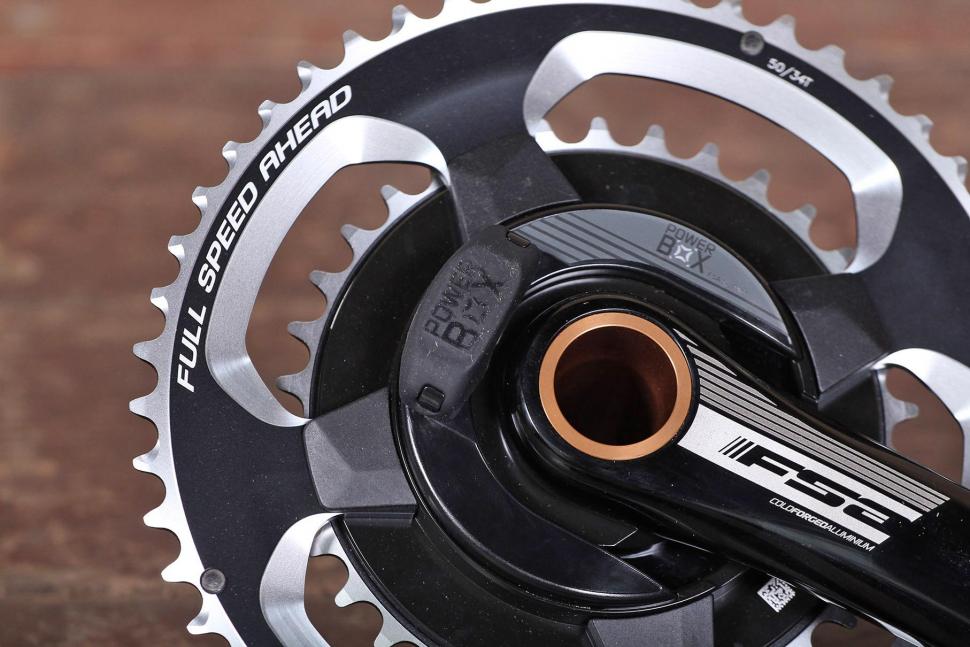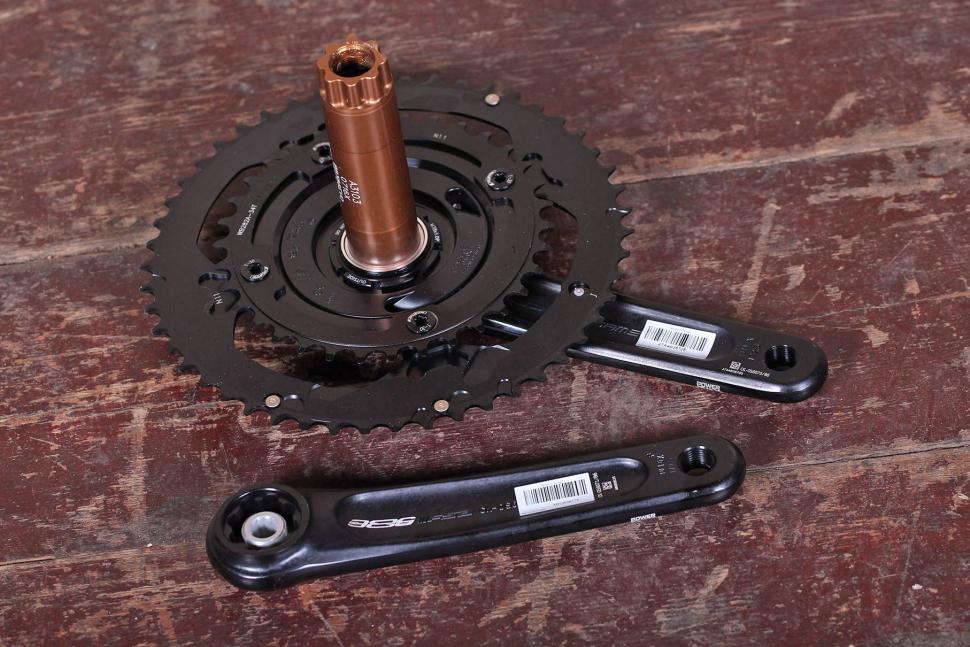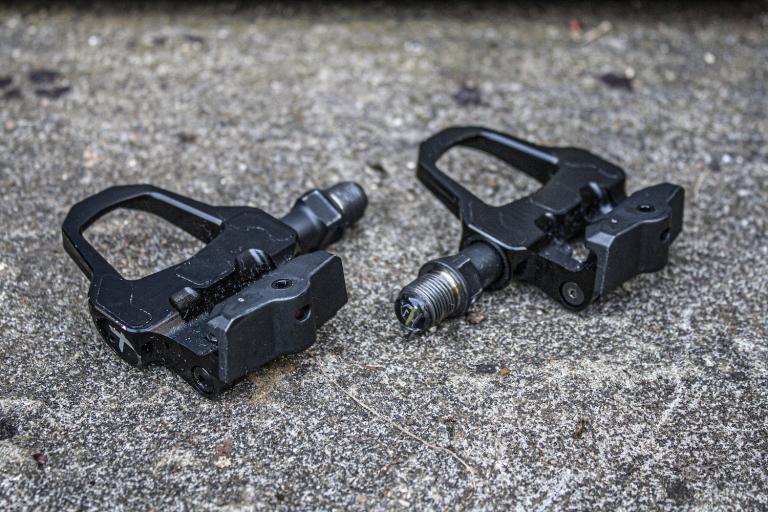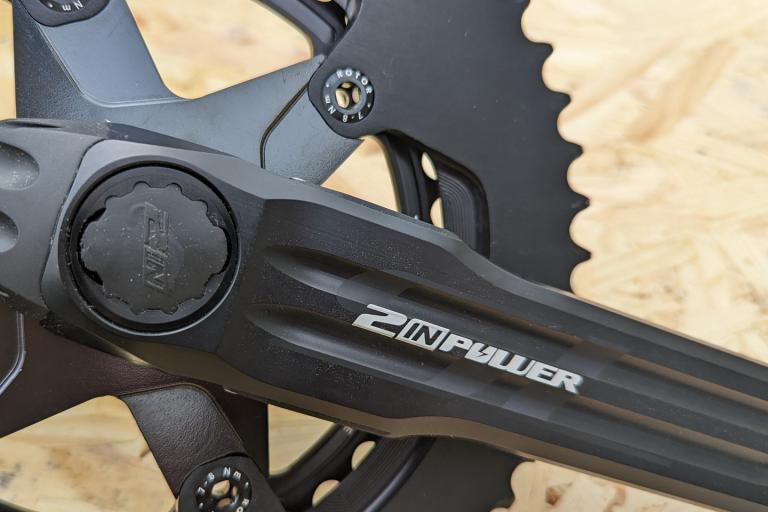- News
- Reviews
- Bikes
- Accessories
- Accessories - misc
- Computer mounts
- Bags
- Bar ends
- Bike bags & cases
- Bottle cages
- Bottles
- Cameras
- Car racks
- Child seats
- Computers
- Glasses
- GPS units
- Helmets
- Lights - front
- Lights - rear
- Lights - sets
- Locks
- Mirrors
- Mudguards
- Racks
- Pumps & CO2 inflators
- Puncture kits
- Reflectives
- Smart watches
- Stands and racks
- Trailers
- Clothing
- Components
- Bar tape & grips
- Bottom brackets
- Brake & gear cables
- Brake & STI levers
- Brake pads & spares
- Brakes
- Cassettes & freewheels
- Chains
- Chainsets & chainrings
- Derailleurs - front
- Derailleurs - rear
- Forks
- Gear levers & shifters
- Groupsets
- Handlebars & extensions
- Headsets
- Hubs
- Inner tubes
- Pedals
- Quick releases & skewers
- Saddles
- Seatposts
- Stems
- Wheels
- Tyres
- Health, fitness and nutrition
- Tools and workshop
- Miscellaneous
- Cross country mountain bikes
- Tubeless valves
- Buyers Guides
- Features
- Forum
- Recommends
- Podcast
review
£599.95
VERDICT:
Accurate and reliable power meter at a very competitive price
Weight:
994g
Contact:
At road.cc every product is thoroughly tested for as long as it takes to get a proper insight into how well it works. Our reviewers are experienced cyclists that we trust to be objective. While we strive to ensure that opinions expressed are backed up by facts, reviews are by their nature an informed opinion, not a definitive verdict. We don't intentionally try to break anything (except locks) but we do try to look for weak points in any design. The overall score is not just an average of the other scores: it reflects both a product's function and value – with value determined by how a product compares with items of similar spec, quality, and price.
What the road.cc scores meanGood scores are more common than bad, because fortunately good products are more common than bad.
- Exceptional
- Excellent
- Very Good
- Good
- Quite good
- Average
- Not so good
- Poor
- Bad
- Appalling
FSA has jumped into the power meter market by partnering with German company Power2Max to produce a crank-based power meter. Coming in at £599.95, the PowerBox Alloy Chainset is very attractively priced and is backed up by consistent and reliable performance.
The two companies have worked together in the past, but since the launch of its WE groupset FSA has stepped up its offering in the hugely competitive power meter market. PowerBox is available in two versions, either based on a Gossamer aluminium crankset, as tested here, or a K-Force carbon fibre option for £1,199.95. The prices include the aluminium chainrings, with a choice of ratios available.
> Find your nearest dealer here
FSA is using Power2Max's Type-S power meter, not its latest offering, but it's a power meter that has been proven in professional races over the years with several WorldTour teams, so you know it is built to last and accurate enough for the pros.
In detail
It's powered by a CR2450 coin-style battery hidden under a large rubber cover on the spider. Battery life is claimed to be good for 400 hours or 12,000km – I've not run close to that yet.
The battery is easy to replace: just flip that rubber cover, pop the battery out and replace it, and you're good to go. Any concerns it might not be adequately protected from the elements proved unfounded during testing in torrential rain and under the hosepipe when washing the bike down after mucky rides.
The crankset is made with 6061 aluminium, 7075 aluminium CNC-machined chainrings and a BB386EVO 30mm axle. The BB386EVO 30mm axle could potentially limit compatibility in some instances, but there are suitable bottom brackets and adapters available to provide installation for most bike frames. The aluminium version is available with 170, 172.5 and 175mm crank lengths, the carbon version increases the range, from 165 to 180mm.
In use
I've been testing the new PowerBox for the last couple of months, a period of time that has allowed me to put the power meter through its paces in all sorts of conditions and long enough to uncover any hidden gremlins. I can report that there have been no issues at all, in fact performance has been flawless. I'm very impressed.
The PowerBox has delivered consistent power measurement at all times. The claimed +/-2% accuracy precision appears on the money during comparative testing with other power meters (a Wahoo Kickr and PowerTap P1 pedals) with no random spikes or anomalies to report.
It has worked consistently through large temperature fluctuations, the power meter compensating for any changes and preventing any drift in accuracy. Connectivity has been just fine via the ANT+ wireless protocol – Bluetooth Smart is going to be added as an update later this year, which increases the range of compatible devices.
Installation was a cinch. The cranks and chainrings are supplied preassembled so it's simply a case of removing the old crankset and sliding the PowerBox into place. Within a few minutes, it was paired with my Garmin Edge and ready to ride.
Okay, so it's not quite as easy as fitting one of the growing number of single-sided or pedal-based power meters, and swapping between bikes is obviously a drawback of a crank-based power meter, but if you only want or need power measuring on one bike, it's not a problem.
There's never a need to calibrate; the PowerBox has an Auto Zero function so you don't have to manually zero offset it before a ride, and it does this every time you stop pedalling for three seconds. The power meter goes to sleep when not in use and wakes up within a couple of pedal revolutions. You can also change the chainrings without affecting the calibration. An integrated accelerometer provides cadence data so no attaching magnets needed.
> Buyer's Guide: How to choose a cycling power meter
FSA makes excellent chainrings and they presented no issues on the SRAM Red-equipped bike I used for testing the PowerBox. The 7075 aluminium chainrings, compatible with 10 and 11-speed Shimano and SRAM groupsets and 10-speed Campagnolo, provided excellent shift quality – smooth and precise at all times. As well as the compact 50/34t tested here, FSA offers 53/39 and 52/36 options, using the same 110mm BCD (bolt circle diameter).
Any issues? None whatsoever. Performance was superb. Being critical, the PowerBox in this aluminium guise is no featherweight: the driveside crank is 669g. The carbon PowerBox drops that weight down to 585g but it's nearly double the price, so unless you're a weight weenie I'd stick with the alloy version.
But when it comes to price, the PowerBox has its rivals licked. An SRM is going to set you back £1,800, Pioneer's Dual Leg power meter is £1,100 and the Verve Infocrank is £1,149. The Quarq DZero 11R comes close at £693 but that doesn't include chainrings. So £600 for the power meter and chainrings represents a good buy. And a bit of shopping around reveals it can be had for less.
All things considered, the FSA PowerBox is a highly impressive power meter, and the price, performance and reliability make it extremely easy to recommend.
Verdict
Accurate and reliable power meter at a very competitive price
road.cc test report
Make and model: FSA Powerbox Alloy Chainset
Size tested: 50/34t, 172.5mm, 110mm BCD
Tell us what the product is for, and who it's aimed at. What do the manufacturers say about it? How does that compare to your own feelings about it?
FSA says: "FSA's ROAD PowerBox Alloy Crankset employs a P2M convertible spider design for multiple chainring options. FSA's alloy arms and BB386EVO spindle mated together produce a very lightweight, extremely versatile power meter crankset available with a double chaining configuration."
Tell us some more about the technical aspects of the product?
FSA lists these features:
Cold forged AL6061/T6 aluminum crank arms
BB386EVO 30mm AL 7050 alloy spindle fits every frame (purchase BB separately)
AL7075 100% CNC chainrings
Chromoly chainring bolts
Fits Shimano and SRAM 10-11 speed systems
Spider-based power sensors provide total power output measurement of both legs, with Left & Right leg output analysis available with system upgrade*
Bluetooth connectivity available with system upgrade*
*System upgrades (consumer in-app purchase) will be available from September 2017, Costs and complete features of the system upgrade to be announced.
Rate the product for quality of construction:
9/10
First class construction quality, no complaints or issues.
Rate the product for performance:
9/10
Works well all of the time, what more do you need. It's accurate and consistent, the two key qualities you want in a power meter.
Rate the product for durability:
8/10
Not had any problems at all.
Rate the product for weight (if applicable)
6/10
It's not particularly light.
Rate the product for value:
9/10
It's about the same price as a Stages Ultegra single-sided power meter, but the PowerBox measures power at the crank spider and provides left and right leg power measurement.
Tell us how the product performed overall when used for its designed purpose
Delivered consistent and accurate power measurement in all conditions.
Tell us what you particularly liked about the product
Worked flawlessly all of the time.
Tell us what you particularly disliked about the product
The weight, if I'm being a bit picky.
Did you enjoy using the product? Yes
Would you consider buying the product? Yes
Would you recommend the product to a friend? Yes
Use this box to explain your score
Power meter prices are gradually falling, and while not cheap, the new FSA PowerBox Alloy is a seriously good option at this price.
About the tester
Age: 31
I usually ride: My best bike is:
I've been riding for: 10-20 years I ride: Every day I would class myself as: Expert
I regularly do the following types of riding: road racing, time trialling, cyclo-cross, commuting, touring, mountain biking
David worked on the road.cc tech team from 2012-2020. Previously he was editor of Bikemagic.com and before that staff writer at RCUK. He's a seasoned cyclist of all disciplines, from road to mountain biking, touring to cyclo-cross, he only wishes he had time to ride them all. He's mildly competitive, though he'll never admit it, and is a frequent road racer but is too lazy to do really well. He currently resides in the Cotswolds, and you can now find him over on his own YouTube channel David Arthur - Just Ride Bikes.
Latest Comments
- Mr Blackbird 2 sec ago
Not sure if you are asking yourself to reply to yourself, or if you are asking me to reply....
- David9694 58 min 12 sec ago
Garstang NSW
- Rendel Harris 2 hours 51 min ago
The owner of that car wants to take it back to the dealer and get the lights fixed if they're so poor they can't see someone in red until they're...
- NickJP 8 hours 33 min ago
Now that I'm in my 70s, I don't have a big chainring larger than 42t on any of my bikes. When I started racing in the early 1970s, standard top...
- stonojnr 9 hours 36 min ago
nah they just read the question as do you always not leave the recommended 1.5m when overtaking cyclists. I know people overestimate their...
- David9694 9 hours 44 min ago
Worcester hospital parking 'horrific' as petition handed in...
- stonojnr 9 hours 46 min ago
Ive never seen the figures broken down by who reports them, you can kind of infer things from stats, like Ive seen them break it down as careless...
- wtjs 10 hours 25 min ago
No more of this! HP will turn to stone!!
- Bmblbzzz 12 hours 40 min ago
"A brutalist interpretation of a road" So true. Grey markings on grey paving slabs surrounded by other grey paving slabs...
- arichman 13 hours 13 min ago
Somewhat confusingly, Velocio includes both a fit and a size chart, and says to use the fit chart (which uses height and weight) as the guide for...











Add new comment
13 comments
I believe you. The point in question is that the units have text on the spider stating that they are not Type-Ses but NGecos. Regardless of your good experience with the unit, it is inaccurate to state explicity that PBs are based on the Type-S and not "the latest offering" because they are in fact identical hardware to the latest offering, and this is a concern for those who may not necessarily wish to use a recently released PM.
This article requires a correction. The FSA PowerBox is not based on the power2max Type-S, which as the article notes is a proven PM. It instead *is* a power2max NGeco, which is a much more recent release. A number of these units are experiencing flaws including vastly accelerated battery consumption and power/cadence dropouts at one minute intervals. It should be made clear in this article, which gives the impression that this is tested and reliable technology.
I can confirm that the FSA PowerBox has been very reliable during the long and extensive testing period, with no issues of battery consumption or power/cadence dropouts
I picked up my PowerBox today and I did a 19km ride with it. The results are just wrong. It shows me 11W average power, and no, it's not 19km downhill 3% grade shows 38 watts. Looking at the graph it shows that most of the short climb (bridge over the local river) was achieved with negative power. Has anyone here had a similar issue? Is it perhaps something that will just sort itself out by "depowering" as they call it in the manual?
3% grade shows 38 watts. Looking at the graph it shows that most of the short climb (bridge over the local river) was achieved with negative power. Has anyone here had a similar issue? Is it perhaps something that will just sort itself out by "depowering" as they call it in the manual?
Cadence values work perfectly btw.
Thanks!
*edit* Running calibrate from my Garmin solved the problem. Some kind of offset probably. Maybe someone will see this and learn from my problems. It seems to work just fine now.
/ H
I picked up one of these from a well known UK web supplier, duly installed in place of the standard BB30 Gossamer with 386evo adapters and... creaks when under pressure... I've emailed FSA for guidance but the likely hood is that I'll never get a reply and it'll go on eBay very shortly. If I remove the powerbox and put the old BB30 crank back on the bike the creaking stops so I'm confident it's not the BB but the tolerance of the spindle inside the bearings being too narrow. Removing and installing the FSA Gossamer BB30 takes some light force where as the FSA Powerbox I can do without thinking about it...hence the previous thought.
I'd be interested to know from anyone who's installed successfully inside a BB30 with the mandatory adapters (MW258A) without issue. I've got mine installed on a CAAD10 2015.
The powermeter functions fine however after 38 hours of cycling I had to change the battery, no where near the claimed 200+ hours which was dissappointing. I order three spare batteries when buying the PM.
I already had a Quarq DZero BB30 prior to getting my Ultimate so I decided to go with a FSA BB86-386EVO converter. However, if I had bought the frame and the power meter at the same time I'd have gone with a 24mm axle for sure. The converter works but the bearings are really small as you'd expect. Yes they are double-rowed to make up for it, but I can't help but be nervous about how long they will last.
I would not buy another power meter with a 30mm axle. It's just too limiting.
Focus bike with a PF30 BB. The crankset fitted before was a BB386, so was literally one bolt to change.
Halfords and Screwfix do them, plus Amazon etc.
Looks like a good deal, but the CR2450 battery is pretty uncommon. Is availability good in the UK?
I bought a pair of them on eBay for a couple of quid, after finding my local big Tesco didn't stock em
I got one of these a few months back, am incredibly pleased with it.
5 mins to fit and check side float clearance, another 5 mins to refit appropriately shimmed. Turned on Garmin, spin of pedals and connected first time.
Power readings are similar ride on ride for effort and conditions. Can't validate accuracy with my setup but it is remarkable consistent with no obvious rogue data in hundreds of miles. The power readings have been consistent with the Wattbikes I use so no reason to doubt.
Almost swapped out crankset and got a Gen 2 stages, but seeing the problems my ride buddy has put me off (he ended up sending it back twice, first ran out batteries overnight and on the second the power constantly crept up during a ride - he eventually got a 4iiii instead).
The arms are same fitment as the SL-K Light crankset I took off, so could save a little weight over the alloy arm.
Supplied by Swift Cycles in central London, they have looked after me really well since discovered them a couple of years ago.
@Boombang:
What frame/bike did you fit to?
Did you have to replace the BB?
I was looking to get one of these, but it's a Canyon with 24mm Shimano BB I have and would need to get a suitable 86mm PF30/41mm BB...and the alloy version of the crankset is 170mm smallest size...I normally run 165mm.
Thanks.
@The_Kaner:
Mine came just minutes ago. I am about to fit it into a BSA68 frame using FSA MegaEvo 386 external bottom bracket cups. They are different than standard HollowTech II BB cups and are not compatible with 24mm spindle cranks.